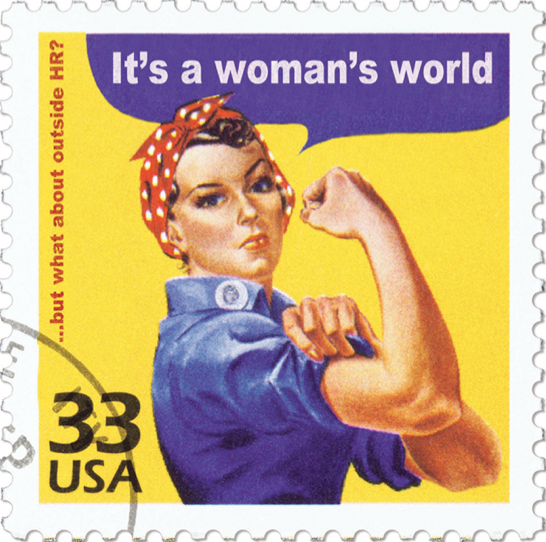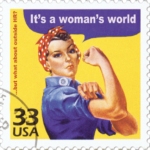
 ...but what about outside HR?
...but what about outside HR?
With women so well represented in HR, both regionally and across the globe, why are so few moving up into senior leadership roles? HR Magazine explores why this is happening and what can be done to get the best out of both worlds when it comes to gender equality and effectiveness in the workplace.
Diversity and inclusion—when discussed by HR, boards, business commentators and at HR Magazine events—more often than not shines the spotlight on the push for more representation of women on boards, equal treatment for those with disabilities and for sexual preference to have no bearing upon the view of and treatment of LGBT individuals in the workplace.
Research from the US, Canada and the UK, however, has thrown up the suggestion that men are under-represented in senior and management positions in HR. So, before looking to promote female representation outside of the function, should HR first be looking within itself?
According to Michael Page’s global HR Barometer 2013, in Asia 60% of senior HR positions are held by women. This is close to the global average of 59% but seems much more equal than in North America where the average is 66%, according to Michael Page, or 69% according to HRxAnalysts’ What HR thinks and feeds: the 2011 Psychographic survey of HR Professionals. Julie Cook Ramirez, in her article the feminisation of HR quoted Tim Sackett, Executive VP, HRU Technical Resources, as asserting that the presence of women in the HR profession has become so universal that now the term ‘women in HR’ is an oxymoron, or more accurately a pleonasm. Indeed, he claimed that the majority of HR executives in Fortune 500 companies with which he does business are female. While such data must be continually updated to be as accurate as possible, several head HR honchos in the West have been quick to offer up their theories behind the preference for female HR managers.
Why HR?
John Sumser, Principal Analyst at HRxAnalysts, a California-based research firm, is rather outspoken on his theory which may be less than popular. According to him, women succeed in HR functions as, in the world of business, it is that which most requires a housekeeper-type personality. He said, “HR is the only predominantly female function in the contemporary organisation.
It is the beach head of accomplishment in the generational move of women from home to the executive suite. While the oft-repeated stereotype is that men are HR’s decision makers, the truth is that women occupy two-thirds of the HR executive seats.” Tracy McCarthy, Senior VP, SilkRoad Technology explained that the men in HR shy away from generalist roles and veer towards more ‘black and white’ roles such as recruiting, where accomplishment is more easily measured.
Keeping house
Sumser’s article, HR is female, attracted comments online from many seasoned HR practitioners, many of which were themselves female. His apparent argument—that all women are good for is being a dowdy housewife, whether at home or in the office—may be overflowing with gender oversimplification, but one must consider that perhaps he is not the only one to be thinking the very same thing, filling their HR pipeline with this square-peg-square-hole mentality. Could it be true that this theory for the female-leaning gender imbalance is well founded? If so, what qualities are missing that men could bring to the table, and into which other business functions could women be venturing to put their nurturing and rational decision-making skills to further use? According to one commenter, HR is female was not designed to blast the female half of the population but rather to advise solution providers dealing with HR that coming in and selling on monetary factors is not the way to ‘woo’ today’s HR decision makers who are more likely to make decisions based on empathy than their male business counterparts. Susan Gunn, VP HR, Gardner Denver—a US-based industrial manufacturer—seems to share Sumser’s logic of HR suiting the innate nurturing nature of women, to a point. She commented, “In their daily lives, women have to multitask across a lot of different things just to keep moving. The same skill set is called upon in HR. No day is ever the same. You never know what you are going to walk into when you start your day in an HR capacity.”
Striking a balance
Sackett warns that a current female-filled pipeline will not even itself out in the future due to a natural tendency for managers to hire, mentor and promote those who resemble themselves, as happens in many a field. He suggests that the way that this will reach a balance is through the HR function becoming more strategic, and therefore more attractive to males. Some organisations are recognising the under-representation of men in HR and are seeking, and calling for others, to redress the balance. Claude Balthazard, Director of HR Excellence, Human Resources Professionals Association remarked, “There is a general agreement that it would be a good thing if there was a better gender balance. There is a definite notion that HR should mirror the population it serves.” It should be noted, however, that the high visibility of women in HR management does not necessarily mean that it goes all the way to the top. In Hong Kong, those with a Y chromosome occupy over 90% of board-level positions, according to Randstad’s 2013/14 World of Work report. Sumser stated, “If there’s a woman in the boardroom, it’s likely she’s in HR. That’s the place in the organisation where the glass ceiling is the thinnest.” With this in mind, it could be that the foothold of HR which is allowing more women than ever before to stake their place in the boardroom could prove to be the inspiration for future wayleaders to break out into the still-male-dominated positions on the board.
Forbes’ females
Angela Merkel, Chancellor of Germany since 2005, tops the FORBES 2014 list of the most powerful women, for the eighth time. Not only this, she also features as number five in the FORBES 2014 most powerful people in the world. As a country with an enviable reputation for economic stability, low corruption and political wisdom, Merkel has proven the adage, which women have been fighting for decades to prove, namely, ‘Yes we can do it, and we can do it even better’.
Number nine in the FORBES list of the top ten richest people in Hong Kong is Pansy Ho, daughter of casino tycoon Stanley Ho. Whilst her familial connections no doubt helped her make her way in life, she has carved herself a very respectable career away from the glare of her father’s casino empire, currently serving as Chair of Jetstar Hong Kong.
All above board
In an effort to get the best female candidates a chance to progress to the best boards in North America, executive search firm Spencer Stuart and corporate governance community WomenCorporateDirectors have formed a strategic partnership. Their collaboration will, they profess, help them to raise the game in corporate governance through their chapters over North America and boardroom expertise sharing sessions. The cooperation will help to raise the bar, according to Julie Hembrock Daum, head of Spencer Stuart’s North American Practice, by, “Connecting companies with the highest performing directors, and ensuring that directors get the information and insights they need to serve.”
On a local note, Community Business released the findings of their latest research standard Chartered Bank Women on Boards Hong Kong 2014 at the start of March, to coincide with International Women’s Day on 8 March. The research found that in the past year, in Hong Kong’s 50 leading companies as listed on the Hang Seng Index, the amount of women holding directorship roles has increased just 0.2%—from 9.4% to 9.6%. When looking at the 356 companies listed on the Hang Seng Composite Index, the news is even bleaker—women are holding just 9% of board positions.
Their previous research project, the Board Diversity in Hong Kong: Directors’ Perspectives 2013, released late last year, showed that 76% of directors in Hong Kong see board diversity as a measure to comply with corporate governance requirements rather than a move that makes good business sense, although 91% believe that diversity in the boardroom leads to balanced decision making. It seems that inviting candidates into high-power positions regardless of gender, age and culture is yet to be seen as a non-issue, rather than an act of positive discrimination.
Late in 2013, Hong Kong Exchanges and Clearing Limited (HKEx)—along with their subsidiaries including the Stock Exchange of Hong Kong Limited—strengthened its effort by introducing a board diversity code provision. The city is steering towards inclusion and openness, although perhaps more for appearances than faith in benefits it will bring. Fern Ngai, CEO, Community Business said, “Despite HKEx’s laudable efforts to promote board diversity with the introduction of the new code provision last September, international attention on this issue, and efforts of a number of fronts to increase the supply and visibility of female talent in Hong Kong, we are not seeing evidence that mindsets are changing or that companies are taking steps to ensure more women are given a seat at the top table.”
It remains to be seen whether women will truly be welcomed to take any seat at the boardroom table and also whether the high representation of women in HR positions will shift along with the increasingly strategic focus of HR departments. Gunn said, “Having a balance of both genders adds to the dynamics of the profession and the ability to garner different views and opinions and thoughts,” and whilst she was talking of HR, this surely should be true of all business roles.




